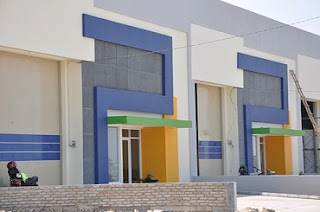New treatment for nash / The Nonalcoholic Steatohepatitis (NASH) Clinical Research
Network is launching its first two clinical trials for
the study of NASH, a
liver disease that resembles alcoholic
liver disease but occurs in patients who drink little
or no alcohol. NASH occurs most often in adults over
the age of 40 who are overweight or have diabetes, insulin
resistance (pre-diabetes), or hyperlipidemia (excess
concentrations of fatty materials in the blood). NASH
can also occur in children, the elderly, normal-weight,
and non-diabetic persons. The NASH Clinical Research
Network and the clinical trial are funded by the National
Institute of Diabetes and Digestive and Kidney Diseases
(NIDDK), one of the National Institutes of Health (NIH).
NASH accounts for about 10 percent of newly diagnosed
cases of chronic
liver disease, and ranks as one of
the leading causes of cirrhosis in the United States,
following hepatitis C and alcoholic liver disease. Characteristics
of the disease include abnormal liver enzyme levels,
liver cell injury, inflammation and fibrosis in the
liver, and excess amounts of fat stored in the liver.
Though most people with NASH feel healthy and show no
outward signs of a liver disease, NASH is progressive
and can lead to cirrhosis and end-stage liver disease,
which may require liver transplantation. The only way
to distinguish NASH from other forms of fatty liver
disease is with a liver biopsy.
New treatment for nash
"NASH has become a serious public health problem, because
the incidence of
NASH has risen with the increase of
overweight and obesity in this country," says Patricia
Robuck, Ph.D., M.P.H., project scientist for the NASH
Clinical Research Network and director of the Clinical
Trials Program within the Division of Digestive Diseases
and Nutrition at the NIDDK.
The NASH Clinical Research Network, consisting of eight
clinical centers and a data coordinating center, was
formed in September 2002 to conduct research on the
natural history, pathogenesis, and treatment of NASH.
With the information collected from observational studies
and clinical trials on both adult and pediatric NASH
patients, the Clinical Research Network will create
a database of information to be used by researchers
in the development of therapies for
NASH. The Network
also plans to encourage collaborations among clinical
and basic researchers to generate information and develop
ancillary studies using the resources of the database.
While there are currently no proven treatments for
NASH, results from small pilot trials suggest that certain
diabetes drugs improve liver enzyme levels and may slow
or reverse the progression of NASH. Other pilot studies
indicate that patients with this liver disease show
improvement by following a regimen of balanced diet
and exercise and also respond favorably to treatment
with antioxidants such as vitamin E.
The first two clinical trials for the
NASH Clinical
Research Network will focus on the use of insulin-sensitizing
agents and vitamin E for the treatment of NASH in adults
and in children. The first clinical trial, the
Pioglitazone
versus Vitamin E versus Placebo for the Treatment of
Nondiabetic Patients with Nonalcoholic Steatohepatitis
(PIVENS) trial is currently recruiting non-diabetic
patients and will enroll 240 adults over 2 years into
one of three treatment groups.
Men and women aged 18
years and older will be assigned to either the vitamin
E group, pioglitazone (an insulin-sensitizing agent)
group, or placebo group. Potential patient volunteers
will receive a standard oral glucose tolerance test
after a 12-hour fast to rule out the presence of diabetes.
Volunteers will also undergo liver biopsies at the start
and the end of the trial.
"We believe that even in the absence of diabetes, drugs
that improve insulin resistance may improve NASH. The
PIVENS trial will test the possibility that both pioglitazone
and vitamin E are effective
treatments for NASH," says
Arun Sanyal, M.D., co-chair, NASH CRN and principal
investigator for the center at Virginia Commonwealth
University in Richmond.
The second clinical trial, the "Treatment of Nonalcoholic
Fatty Liver Disease (NAFLD) in Children" (TONIC) trial,
will enroll 180 children with NAFLD to receive vitamin
E, metformin (an insulin-sensitizing agent), or placebo
over 18 months. The TONIC trial will begin recruitment
in June 2005.
"Having a clear understanding of the pathogenesis of
NASH and its natural history in both adults and children
should translate into better treatments that slow or
prevent NASH from progressing, ultimately improving
the quality of life of patients with this liver disease," says
Jay Hoofnagle, M.D., director, NIDDK
Liver Disease Research
Branch.
The eight clinical centers of the NASH Clinical Research
Network recruiting patients include: Case Western Reserve
University in Cleveland; Duke University Medical Center
in Raleigh-Durham (adult site)/ Johns Hopkins University
in Baltimore (pediatric site); Indiana University in
Indianapolis; St. Louis University in Missouri; University
of California in San Diego; University of California
in San Francisco; University of Washington in Seattle;
and Virginia Commonwealth University in Richmond. The
Johns Hopkins University Bloomberg School of Public
Health in Baltimore provides coordination of the research
network data.
The
NASH Clinical Research Network and the PIVENS and
TONIC clinical trials are funded by the NIDDK and an
industry partner, Takeda Pharmaceuticals. Additional
funding is provided by the National Institute of Child
Health and Human Development, part of the NIH, an agency
of the U.S. Department of Health and Human Services.
New treatment for nash
Liver following solution selection

New Chapter LifeShield Liver Force
Customer Review:
Click Here for More Info
$20.62







